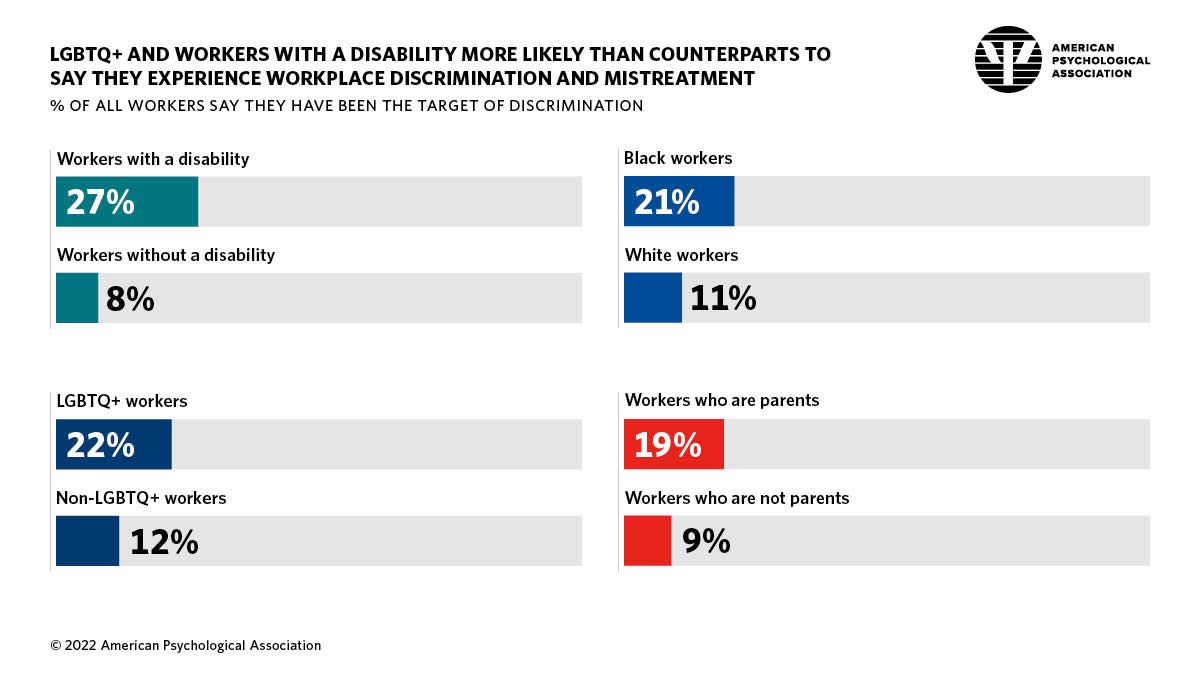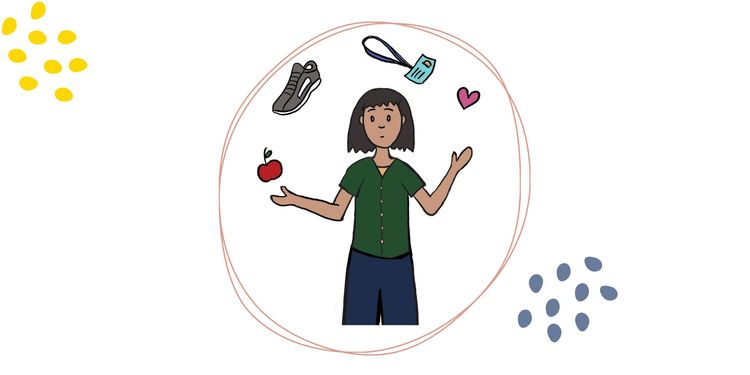
A brave new world of work is emerging that favors mental health and well-being, according to a survey on work and well-being by the American Psychological Association. But it's not free of discrimination and the psychological consequences of bias and ill-treatment at work.
First, the good news. Employers are awakening to the need to support employee mental health and putting more resources behind it. At the same time, workers are demanding support and prioritizing workplaces that provide it.
The survey found:
- 81% of individuals said they will be looking for workplaces that support mental health when they seek future job opportunities.
- 71% believe their employer is more concerned about employee mental health now than in the past.
But the APA’s 2022 Work and Well-being Survey also revealed that American workplaces are still a significant source of stress that can undermine a person’s mental health. Reports of toxicity, physical violence, verbal abuse, harassment, fear, and discrimination were also all-too-common.
The Picture: How common is discrimination at work? And who’s the target?  Source: APA's 2022 Work and Well-being Survey with The Harris Poll
Source: APA's 2022 Work and Well-being Survey with The Harris Poll
Thirteen percent of workers said they experienced discrimination in their current workplace.
Reports of discrimination were much higher for workers with a disability (27%), LGBTQ+ workers (22%), and Black workers (21%). Furthermore, 19% of parents and caregivers said they have been the target of discrimination.
What else did the data show?
- Nearly one in five workers (18%) described their workplace as somewhat or very toxic.
- More than one in five employees (22%) said someone within or outside their organization had abused them verbally in the workplace.
- Black (29%), Latino (31%), and younger adults (38% for 18-25-year-olds) were more likely to say they felt frightened at work than others.
The data aren’t broken down by sex or gender, so it’s unclear whether women and men experience discrimination in the workplace at similar levels.
The Takeaways
Mental health is now a bigger priority for employers and employees alike. Still, the results suggest employers must do much more to support their workers, including women and caregivers.
“It’s the responsibility of the employer to ensure the safety and well-being of their employees while at work,” said Arthur Evans, Jr., the APA’s Chief Executive Officer. “There is always more that can be done.”


